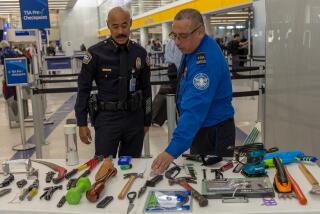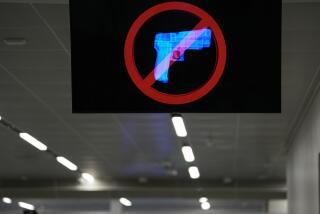Airport scanners pose ‘trivial’ radiation risk, report says
- Share via
The radiation doses emitted by the most common walk-through airport scanners are extremely small and pose no significant health risk, according to a new report by a UC San Francisco radiology specialist.
Still, Dr. Rebecca Smith-Bindman, a professor at the university’s radiology and biomedical imaging department, recommends more independent testing to ensure the scanners are operating as designed.
The report published Monday in the Archives of Internal Medicine comes in response to opposition from privacy rights groups such as the Electronic Privacy Information Center to the use of full-body scanners. The devices use low levels of radiation to create what looks like nude images of passengers, which helps inspectors spot weapons or contraband hidden under clothes.
The U.S. Transportation Security Administration has installed more than 500 scanners at 78 airports. A little more than half of the units use X-rays, while the rest use radio waves to create the images.
But the report concludes that passengers who pass through the full-body scanners are exposed to “an amount of radiation equivalent to 3 to 9 minutes of the radiation received through normal daily living.”
“Furthermore,” the report adds, “since flying itself increases exposure to ionizing radiation, the scan will contribute less than 1% of the dose a flier will receive from exposure to cosmic rays at elevated altitudes.”
The report also calculated the potential cancer risk to all fliers, frequent fliers and 5-year-old girls, who are more sensitive to the effects of radiation. Still, the report concluded that “passengers should not fear going through the scans for health reasons, as the risks are truly trivial.”
More to Read
Sign up for Essential California
The most important California stories and recommendations in your inbox every morning.
You may occasionally receive promotional content from the Los Angeles Times.













